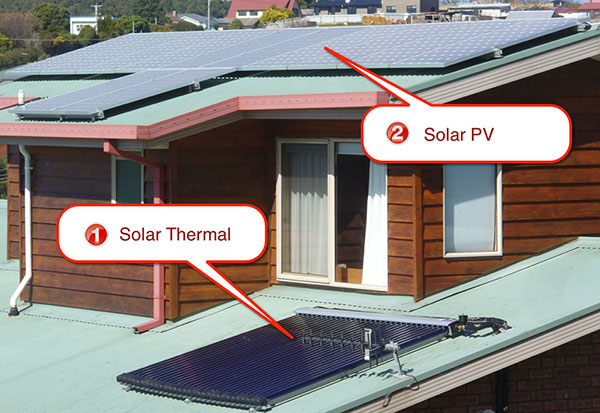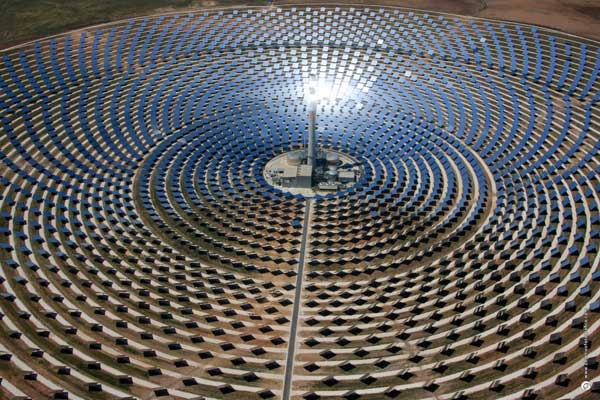How Is Solar Energy Produced?
It can be produced in two ways:

1) By capturing the heat of the sun – this is called “Solar Thermal”.
This is produced by transferring the heat of the sun, as efficiently as possible, to another medium, usually a liquid.
Examples of solar energy that is produced this way include:
• Solar hot water
• Swimming pools heated by the sun using products such as a solar blanket
• Solar thermal power stations that produce steam, which drives turbines, which generates electricity.
2) By capturing the light of the sun and converting this directly to an electrical current.
Solar Photovoltaic (PV to its friends) is the fancy name for a residential solar electricity system. These use the PV effect to produce electricity.
There are also many huge PV power stations around the world, which are just big fields of panels.
Can solar energy produce baseload power?
A solar photovoltaic system can, rather obviously, only produce electricity when the sun is shining; just as a solar thermal system can only generate heat under the same conditions.
So does that mean that we can’t rely on harnessing the sun’s energy to power our economies 27/7?
Well, thankfully solar power’s peak production times of 10am to 4pm coincide exactly with industry’s peak electricity demands, so most of the energy produced is usually used up immediately.
However it is perfectly possible to use these clean energy technologies at any time of day by implementing energy storage.
For photovoltaic systems the solution is to store the solar electricity in batteries.
For solar thermal systems the solution is to store the heat. One way to do this is to use the heat to melt salt. Yes – seriously! Then the molten salt can release the heat many hours later. There are already power stations in existence that actually do this! For example the Torresol Gemasolar Energy plant in Spain. What an awesome sight:
Another way to produce and store solar energy has been pioneered by our very own CSIRO. The CSIRO have a pilot plant in Newcastle that can use the heat from the sun and a special reactor to convert conventional gas into a “solar gas”. The resulting gas contains much more energy per cubic meter than the conventional gas, so it is essentially storing the solar energy in gas form. Pretty neat I reckon.
